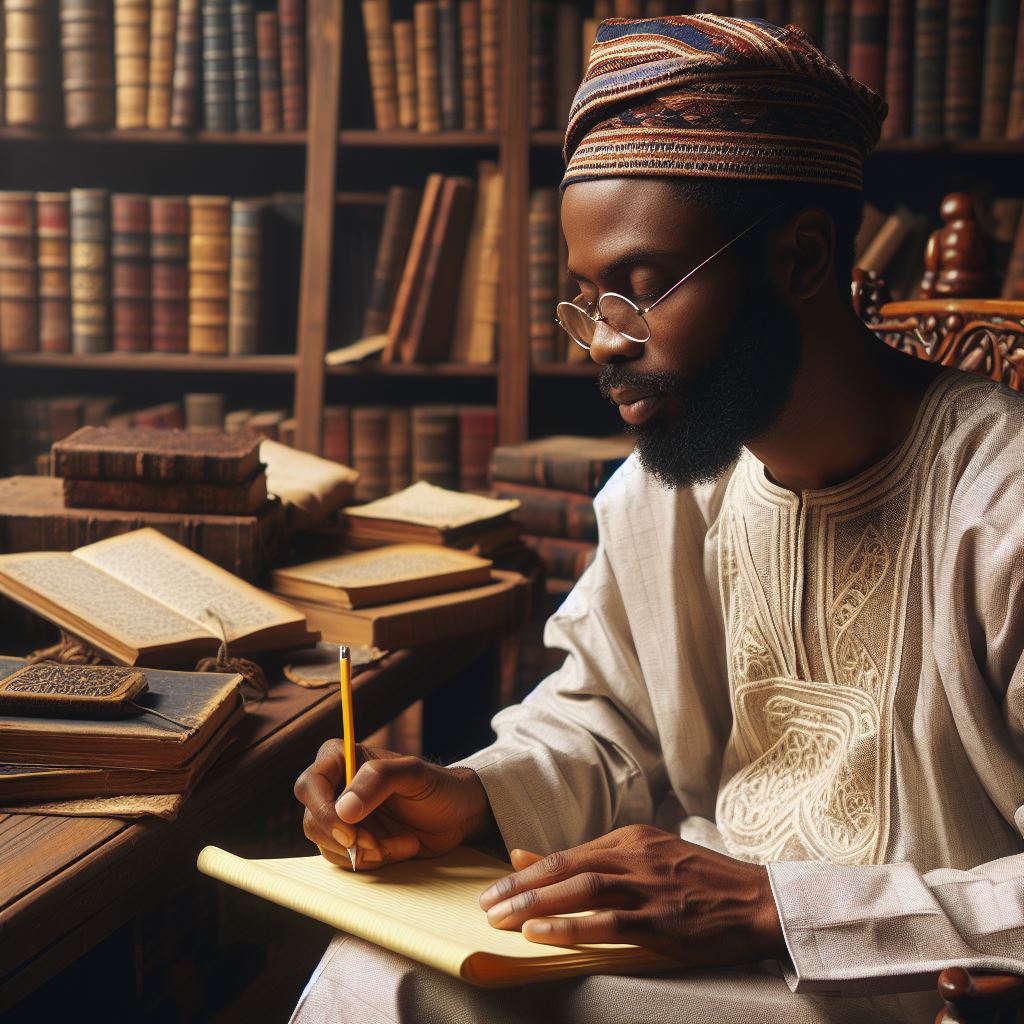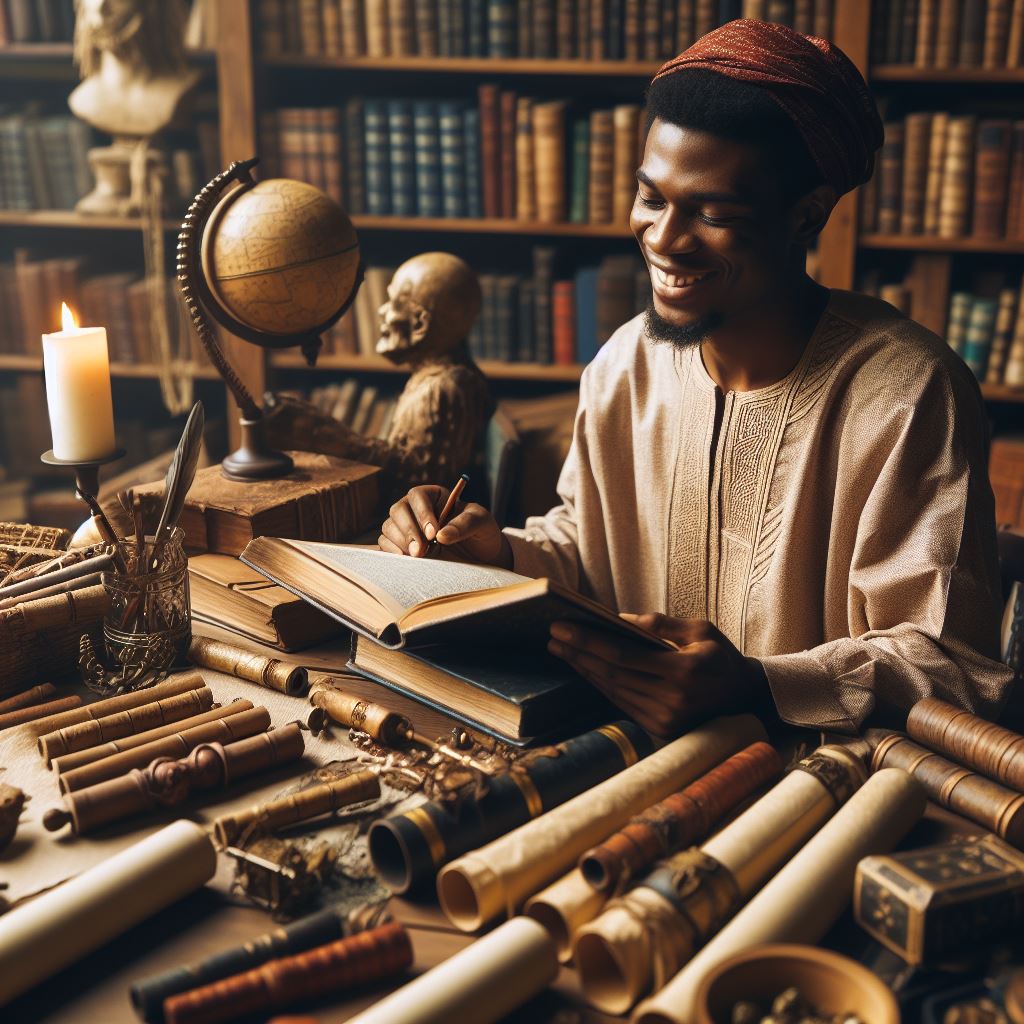Introduction
Gender Studies within African and Asian Studies delves into the intricate dynamics of gender within the cultural landscapes of these regions.
It explores not only the roles and identities assigned to individuals based on their gender but also the complex interplay of power, privilege, and inequality embedded within these constructs.
Studying gender within African and Asian contexts is paramount for several reasons.
Firstly, it provides insights into the historical, social, and cultural factors that shape gender norms and practices.
Secondly, it sheds light on the diverse experiences of women, men, and gender non-conforming individuals within these societies, highlighting both the challenges they face and the resilience they demonstrate.
Finally, understanding gender dynamics is essential for fostering inclusivity, advocating for gender equality, and addressing systemic injustices.
By examining gender through the lens of African and Asian Studies, we can unravel the complexities of identity, agency, and social change within these rich and diverse cultural contexts.
Historical perspectives on gender roles
Throughout history, gender roles in Africa and Asia have been deeply rooted in cultural practices and traditions.
Men were typically seen as providers and protectors, while women were expected to be caregivers and homemakers.
These roles were enforced to maintain societal order and stability.
In Africa, traditional gender roles varied among different tribes and regions.
Some cultures valued the contributions of women in agriculture and trade, while others restricted them to domestic duties.
Similarly, in Asia, gender roles were influenced by religious beliefs and societal norms.
Traditional gender roles in Africa and Asia
African societies often assigned specific tasks to men and women based on their perceived strengths.
Men were responsible for hunting, farming, and making important decisions, while women took care of the household and children.
In Asia, women were expected to uphold values of modesty and obedience to their husbands.
How these roles have evolved over time
Over the years, these traditional gender roles have undergone significant changes.
With the rise of feminism and movements for gender equality, women in Africa and Asia have started to challenge societal norms.
More women are pursuing education and entering the workforce, breaking barriers that once limited their opportunities.
Impact of colonization and globalization on gender norms
The colonization of Africa and Asia by European powers brought about a shift in gender dynamics.
Western ideals of gender equality influenced local communities, leading to changes in traditional roles.
Globalization has further accelerated this process, as Western media and culture promote new ideas about gender identity and empowerment.
Read: Comparing Communication Arts and Mass Communication
Intersectionality in gender studies
Intersectionality is a crucial concept in gender studies as it explores how different aspects of an individual’s identity intersect and interact with each other.
When it comes to African and Asian societies, understanding how gender intersects with other identities such as race, class, and sexuality is essential.
Exploration of how gender intersects with other identities
For example, in many African societies, women’s experiences are shaped not only by their gender but also by their race and social class.
A Black woman in Africa may face different challenges compared to a White woman due to the intersection of race and gender.
Examples of how intersectionality shapes experiences in African and Asian societies
- In Asian cultures, the intersection of gender and sexuality can be seen in the discrimination faced by LGBTQ individuals.
- In African communities, the intersection of gender and class may lead to economic disparities between men and women.
- The intersection of race and gender in both continents can result in unique challenges for women of color.
Importance of considering multiple identities in gender studies research
By acknowledging and studying the intersection of various identities, researchers can gain a more comprehensive understanding of how gender operates in different cultural contexts.
This approach allows for a more nuanced analysis of power dynamics and inequalities within societies.
Overall, incorporating intersectionality in gender studies is crucial for capturing the complexities of individuals’ experiences and promoting social justice in African and Asian communities.
Read: Internship Opportunities for Communication Arts Students
Representation of gender in media and pop culture
In African and Asian media, the representation of gender plays a crucial role in shaping societal perceptions.
Various forms of media, such as films, television shows, music, and advertisements, often reflect and reinforce existing gender stereotypes and tropes.
Analysis of gender stereotypes and tropes in African and Asian media
Gender stereotypes in African and Asian media often portray women as submissive, nurturing, and passive, while men are depicted as dominant, strong, and authoritative.
These stereotypes can limit the representation of diverse gender identities and perpetuate harmful ideas about masculinity and femininity.
Moreover, tropes such as the “damsel in distress” or the “heroic male savior” are commonly seen in narratives across African and Asian media, further reinforcing traditional gender roles.
These tropes not only influence how individuals perceive themselves but also shape societal expectations regarding gender behavior.
Influence of media on shaping societal perceptions of gender
The media’s portrayal of gender can have a profound impact on how individuals view themselves and others.
When certain gender roles are consistently depicted in a positive or negative light, it can influence how people perceive what is considered acceptable or desirable behavior.
For example, the representation of strong, independent female characters in media can challenge traditional gender norms and empower women to assert themselves in various aspects of their lives.
Conversely, the perpetuation of stereotypes like the “bumbling husband” can reinforce harmful dynamics within relationships and perpetuate inequality.
How cultural nuances impact representations of gender
Cultural nuances play a significant role in shaping how gender is represented in African and Asian media.
Different cultures have unique beliefs, traditions, and values that influence how gender roles are perceived and portrayed.
For instance, in some Asian cultures, collectivism and hierarchy may inform the way gender dynamics are depicted, emphasizing harmony and balance in relationships.
On the other hand, African cultures may highlight communal values and interconnectedness, leading to representations of gender that prioritize cooperation and mutual support.
Overall, the representation of gender in African and Asian media is a complex and multifaceted issue that requires careful examination.
By analyzing gender stereotypes and tropes, understanding the influence of media on societal perceptions, and considering cultural nuances, we can strive for more inclusive and accurate representations of gender in media and pop culture.
Read: Digital Media Trends in Communication Arts

Learn More: How to Apply for Music Courses in Nigeria
See Related Content: Career Opportunities for Economics Graduates in Nigeria
You Might Also Like: The Evolution of Nigerian Fashion Design
Gender-based violence and discrimination
Gender-based violence and discrimination in African and Asian Studies
Firstly, gender-based violence and discrimination are pervasive issues in African and Asian societies.
These forms of violence include domestic violence, sexual harassment, and practices like child marriage that disproportionately affect women and girls.
Examination of prevalent issues
Domestic violence, which often goes unreported, is a major issue in both African and Asian countries.
Women are often subjected to physical, emotional, and psychological abuse within the confines of their homes.
The power dynamics within households can exacerbate this violence, making it difficult for victims to seek help.
Sexual harassment is another prevalent issue that women face in various settings, including workplaces, public spaces, and even educational institutions.
The normalization of such behavior and the lack of strict legal frameworks contribute to the perpetuation of this form of violence.
Child marriage, although illegal in many countries, continues to be practiced in some parts of Africa and Asia.
Young girls are forced into marriage, depriving them of their childhood and education.
This practice reinforces gender inequalities and puts girls at risk of early pregnancies and health complications.
Cultural factors that contribute to gender-based violence
Cultural norms, traditions, and beliefs play a significant role in perpetuating gender-based violence in African and Asian societies.
Patriarchal systems that prioritize male authority and dominance contribute to the marginalization and subjugation of women and girls.
The stigma associated with speaking out against abuse and the pressure to maintain family honor often prevent victims from seeking help.
In some cases, societal expectations dictate that women should endure violence in silence to avoid bringing shame to their families.
Efforts to address and combat gender-based discrimination and violence
Numerous organizations, government agencies, and grassroots movements are working tirelessly to address gender-based violence and discrimination in African and Asian societies.
These efforts include advocacy for stronger legal protections, educational campaigns to raise awareness, and support services for survivors.
Community-based interventions that challenge harmful cultural practices and promote gender equality are essential in combating gender-based violence.
Empowering women and girls to speak out against abuse and providing them with access to resources and support networks are crucial steps towards creating safer and more equitable societies.
Generally, gender-based violence and discrimination are complex issues that require multifaceted solutions.
By addressing the root causes of these forms of violence, challenging harmful cultural norms, and promoting gender equality, African and Asian societies can create a more just and inclusive future for all individuals.
Read: Introduction to African and Asian Studies in Nigeria
LGBTQ+ rights and activism
Gender Studies within African and Asian Studies examines the intersectionality of gender and sexual orientation.
It explores LGBTQ+ rights movements in these regions, highlighting both progress and challenges.
Overview of LGBTQ+ Rights Movements in Africa and Asia
In Africa and Asia, LGBTQ+ rights movements have gained momentum in recent years.
Advocates work tirelessly to challenge discrimination and promote equality.
These movements vary in scope and strategy, reflecting the diverse cultural and political landscapes of each region.
In some countries, LGBTQ+ organizations actively campaign for legal reforms and social acceptance.
They organize pride events, rallies, and awareness campaigns to raise visibility and challenge stigma.
Challenges Faced by LGBTQ+ Individuals in These Regions
Despite progress, LGBTQ+ individuals in Africa and Asia still face significant challenges.
Discrimination, violence, and persecution are pervasive, fueled by cultural norms and legal restrictions.
Many LGBTQ+ people live in fear of harassment, arrest, or even death.
They may face rejection from family, community, and society at large.
Access to healthcare, employment, and education can also be limited due to discrimination.
LGBTQ+ individuals often lack legal protections, leaving them vulnerable to exploitation and abuse.
Progress and Setbacks in Advancing LGBTQ+ Rights and Acceptance
There have been notable advancements in LGBTQ+ rights and acceptance in some African and Asian countries.
Legal reforms, such as decriminalizing same-sex relationships and recognizing gender identity, mark significant progress.
Additionally, grassroots activism and international pressure have helped raise awareness and challenge discriminatory laws and practices.
However, progress is often met with backlash.
Conservative forces, religious leaders, and political regimes actively oppose LGBTQ+ rights, framing them as threats to traditional values and social stability.
Anti-LGBTQ+ rhetoric fuels discrimination and violence, exacerbating the challenges faced by LGBTQ+ individuals.
Furthermore, setbacks occur when governments impose restrictive laws or crackdowns on LGBTQ+ activism.
In some cases, LGBTQ+ organizations are banned, and activists are arrested or harassed.
This repression stifles progress and undermines efforts to achieve equality and inclusion.
Despite these challenges and setbacks, LGBTQ+ individuals and allies continue to advocate for change.
They demonstrate resilience and courage in the face of adversity, mobilizing support and building coalitions to advance LGBTQ+ rights.
The fight for equality is ongoing, but the momentum for change is undeniable.
As we continue to study gender and sexuality within African and Asian contexts, it is essential to amplify the voices of LGBTQ+ communities and support their struggles for justice and dignity.
Conclusion
Lastly, Gender Studies within African and Asian Studies play a crucial role in understanding the complexities of gender dynamics within diverse cultural contexts.
The intersectionality of gender, race, class, and other factors is significant in these regions.
Recap of key points discussed in the blog post include the importance of acknowledging the diversity of experiences among women and men in Africa and Asia.
The need to address power dynamics, stereotypes, and traditional gender roles was highlighted.
Call to action for promoting gender equality and inclusivity in African and Asian Studies involves creating inclusive curricula, supporting research on gender issues, and advocating for policies that promote gender equality.
It is essential to engage in critical dialogue and education to challenge existing norms and promote equality.
Importance of continued research and advocacy in the field of Gender Studies within these cultural contexts is paramount.
By understanding and addressing gender inequalities, we can work towards a more inclusive and equitable society in Africa and Asia.
It is crucial to support initiatives that aim to empower marginalized groups and promote gender justice.




